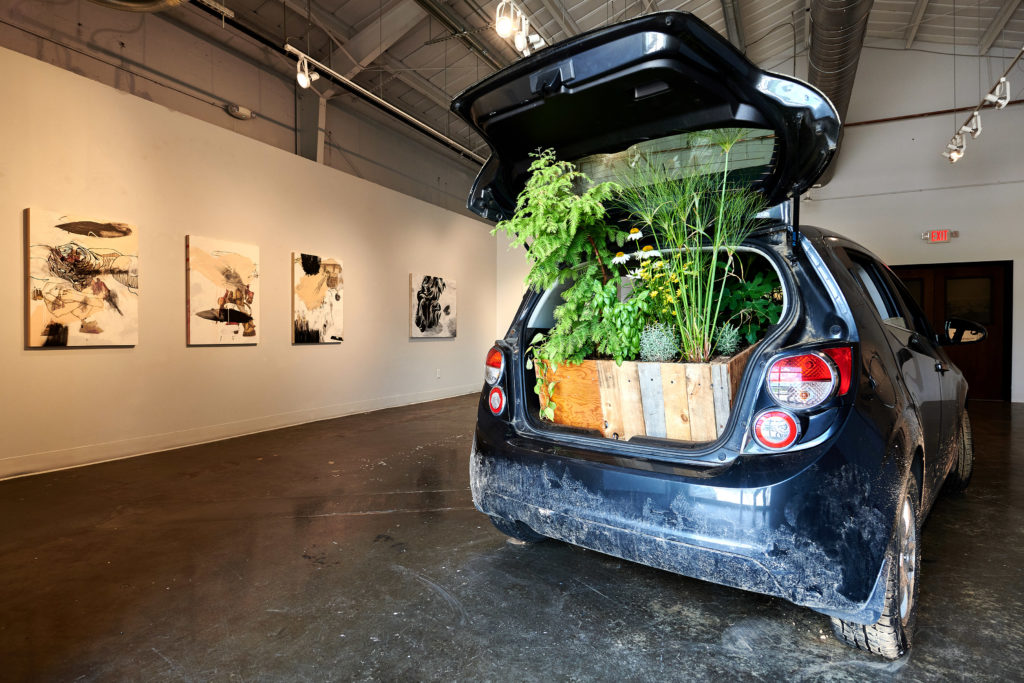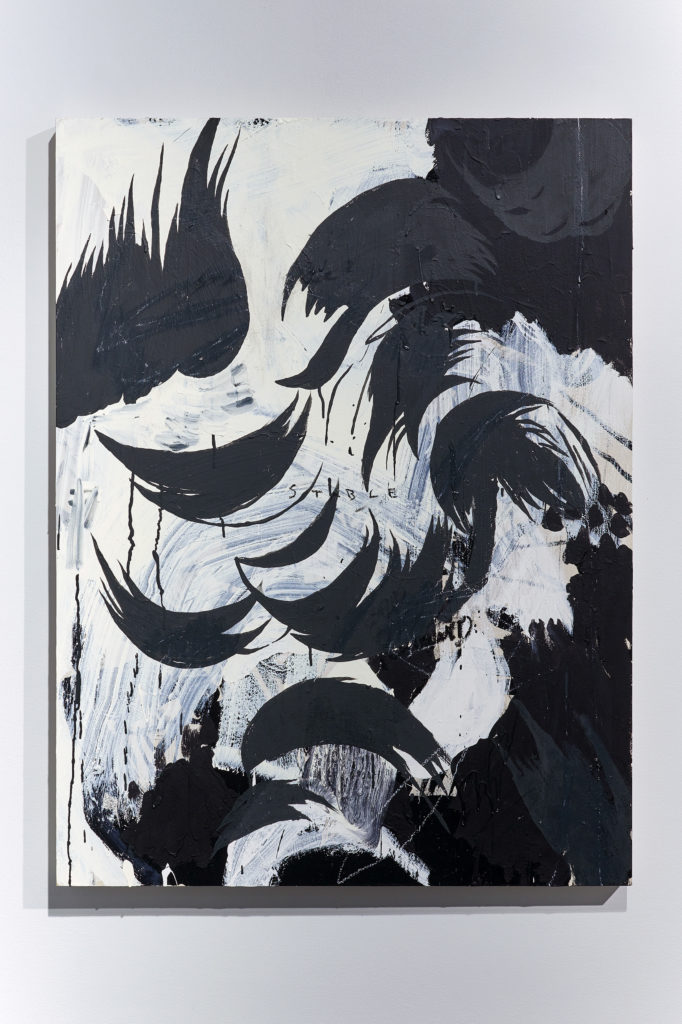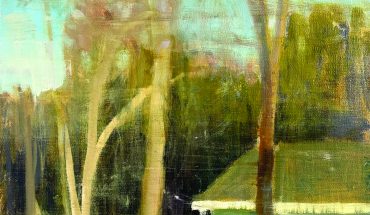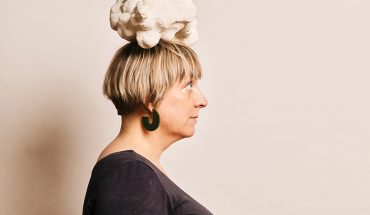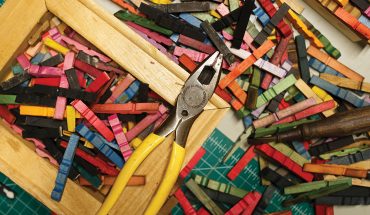The North Carolina artist’s exhibit at Anchorlight Gallery touches on nature, time, and love.
by Courtney Napier | photography by Sally Van Gorder
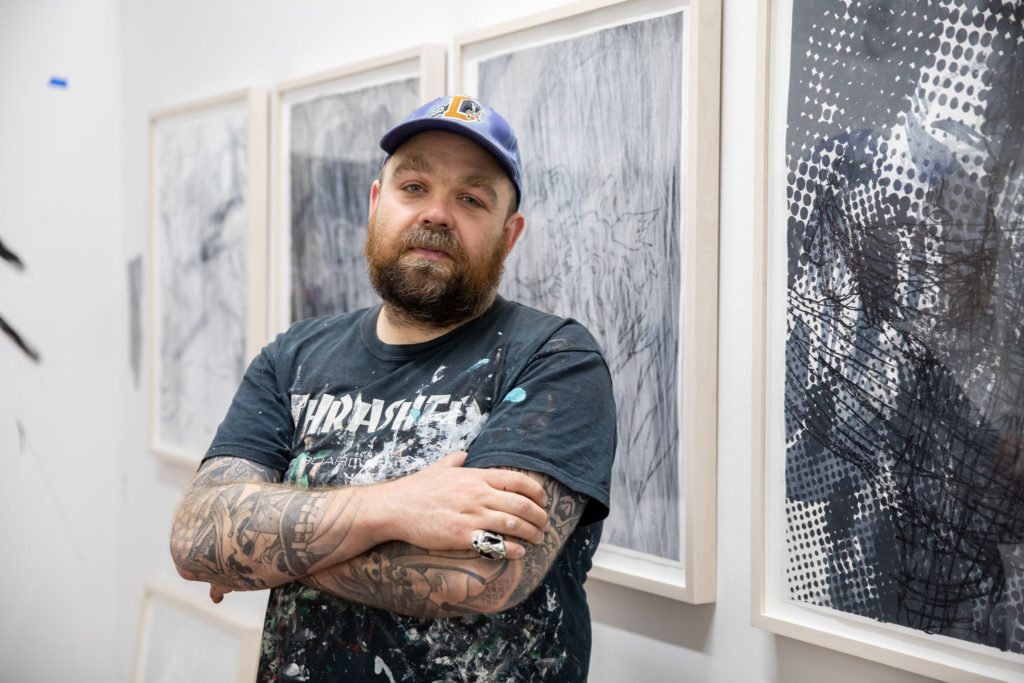
John Felix Arnold III is a multidisciplinary artist from Durham whose deeply personal exhibition, “Time is a Sanctuary” is showing at Anchorlight Gallery on Bloodworth Street. Born out of his trips home from Oakland as he cared for his mother, the exhibition is an exploration of Arnold’s “shifting journey of perception through a period that has seen our collective concept of time create echoes of change.” Providing a sanctuary in a spiritual sense, the exhibition is a container in which the viewer can find, “solace and a sense of place.” It is a space for ritual and observance, deep contemplation, prophetic vision, wrestling with existential concepts of reality, and ultimately surrendering to the greater powers at work around us: nature, time, and love. On Sunday, August 15, John Felix Arnold and fellow artist William Paul Thomas will be in conversation at Anchorlight Gallery for the exhibition’s closing reception. I caught up with Arnold on his way to the gallery to talk about the importance of home in “Time is a Sanctuary” and his reconnection with his North Carolina roots.
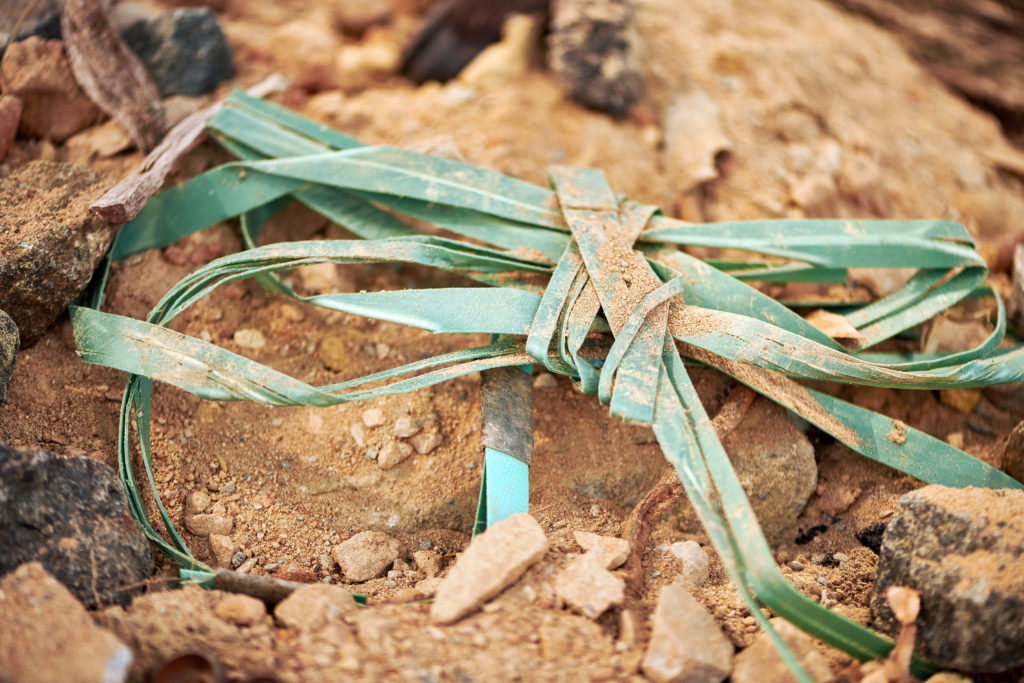
What has it been like working with Anchorlight Gallery and showing this particular exhibition in your home state?
It’s been excellent. I think the show is exactly what it needed to become, and it couldn’t have happened anywhere other than Anchorlight Gallery. Shelley Smith, the director, is amazing to work with. And the space that they have is a really big beautiful space. “Time as a Sanctuary” had to happen in North Carolina, it wouldn’t have made sense anywhere else because this collection of work is so connected to being from the Triangle. Dealing with the experience of my mom’s Alzheimer’s and other life circumstances, being home also really gave energy and insight and, in many ways, led me through the work.
The support that I’ve received being back has been phenomenal. I really feel like part of a community here which, having lived away for so long, is pretty amazing. That’s very special to me, I’m really grateful.
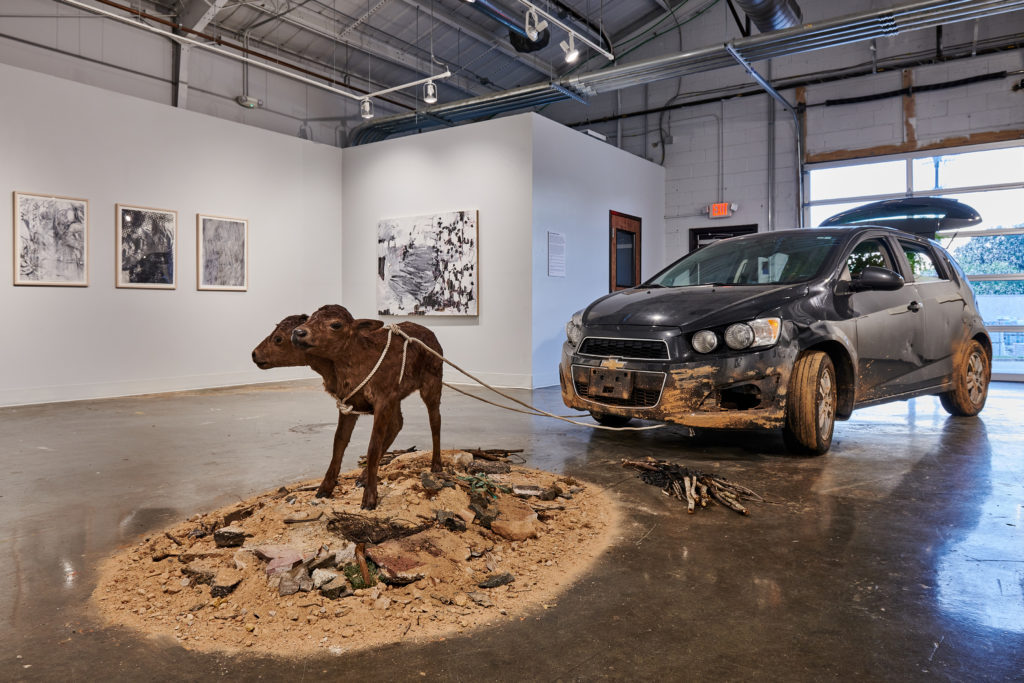
The piece de resistance in “Time is a Sanctuary” is called ReImagining Cerberus, a two-headed calf appearing to pull a car through post-climate change landscape. The exhibit has local elements of debris and rubble from very specific sites around the Triangle. Share your process for choosing these spaces from which you gathered these materials?
All of these places lend themselves to being able to make this visualization of what a post-climate change Triangle area could look like. But there’s also narrative in the actual sourcing of the materials and the significance of those specific spaces. I wanted to take soil, rubble, remnants, and debris from a number of places that hold some level of importance in my life and in the history of that area.
I gathered concrete pieces from a demolished car dealership on Highway 15-501 in Durham. It’s near where the old South Square Mall once stood, which was a formative part of my childhood and adolescence. Returning home and seeing it resemble something almost apocalyptic, or like ancient ruins, caused those memories to flood back. We also used rubble from an old dilapidated barn off of Irwin road that was sort of left to time. FInally we gathered red clay from the construction site for a new development, a type of soil synonymous with North Carolina. Incorporating the construction site was also important because it showed a space that’s actively changing right now. Those narratives and my story channels into the installation, which is about an immense change, the future, adaptability and humility.
Who are some of your biggest artist influences?
There are so many! I would say Robert Rauschenberg and Joan Mitchell are big ones. I just read Alberto Giacometti’s biography during the pandemic lockdown. I was never really into Giacometti before, and now I am a big fan. He is a fascinating artist. His life was very interesting — I’m fascinated by his ideas and the way he sees art.
As far as contemporary artists, I’m a big fan of an artist named Katsuhiro Otomo, a manga artist. I also have been really into Rachelle Dang’s work since I found out about her last year. I love Cao Fei’s film and installation work. Finally, I was able to see Kara Walker’s famed site installation piece at the Domino Sugar Factory in 2014 called “A Subtlety, or the Marvelous Sugar Baby” an experience which completely changed the way imagine and comprehend art. Also Hirokazu Kosaka in LA, deep waters there, really involved profound work.
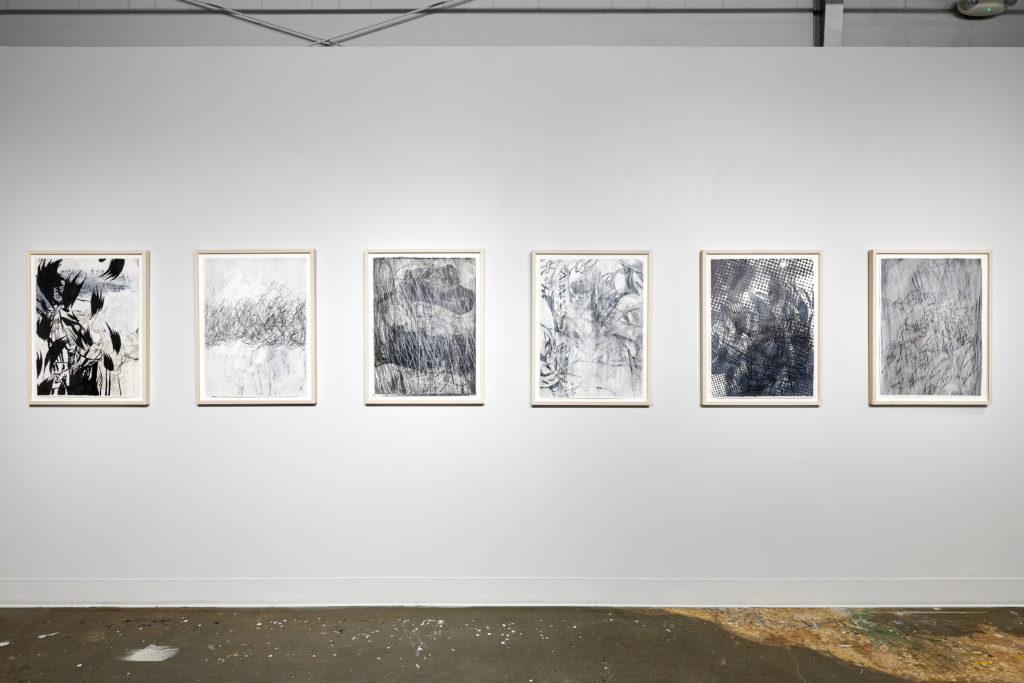
Tell us about the artist talk planned for the closing reception “Time is a Sanctuary”. What’s your connection with William Paul Thomas and what do you hope to talk about?
I was in Durham in 2016 working in a studio in the Golden Belt for a program, and Will was doing the Golden Belt residency. I hadn’t spent a considerable amount of time in Durham since I was 18. I noticed Will’s work immediately and I just kind of dropped by a studio and we started talking. The conversation we started has basically gone on for five years. Will is a phenomenal artist and human being; he’s also super smart and just really inquisitive. He really inspires me a lot and I feel really lucky that we’ve become friends.
“Time as a Sanctuary” will be the centerpiece of our talk, and he will have prepared questions for me about the exhibition. But within that, it’s going to evolve into our ongoing conversation as two artists talking about our work and life, what we’re thinking about, and where that will take us creatively in the future. People will get to see those realizations happening in real time. It’s gonna be a lot of fun. I’m really excited about it.
What projects are you working on? What’s next for you?
I’m coming back to Duke University in late September/early October to finish the residency that I had started that was interrupted by the pandemic. This will include finishing the site specific installation piece that I am working on in the Rubenstein Art Center that I started last March. I’ve been looking forward to finishing it, it’s great working with Bill Fick and everyone at the Ruby. That’s my next project.
